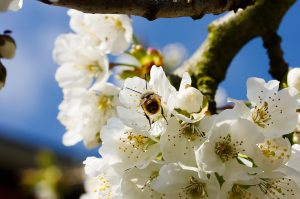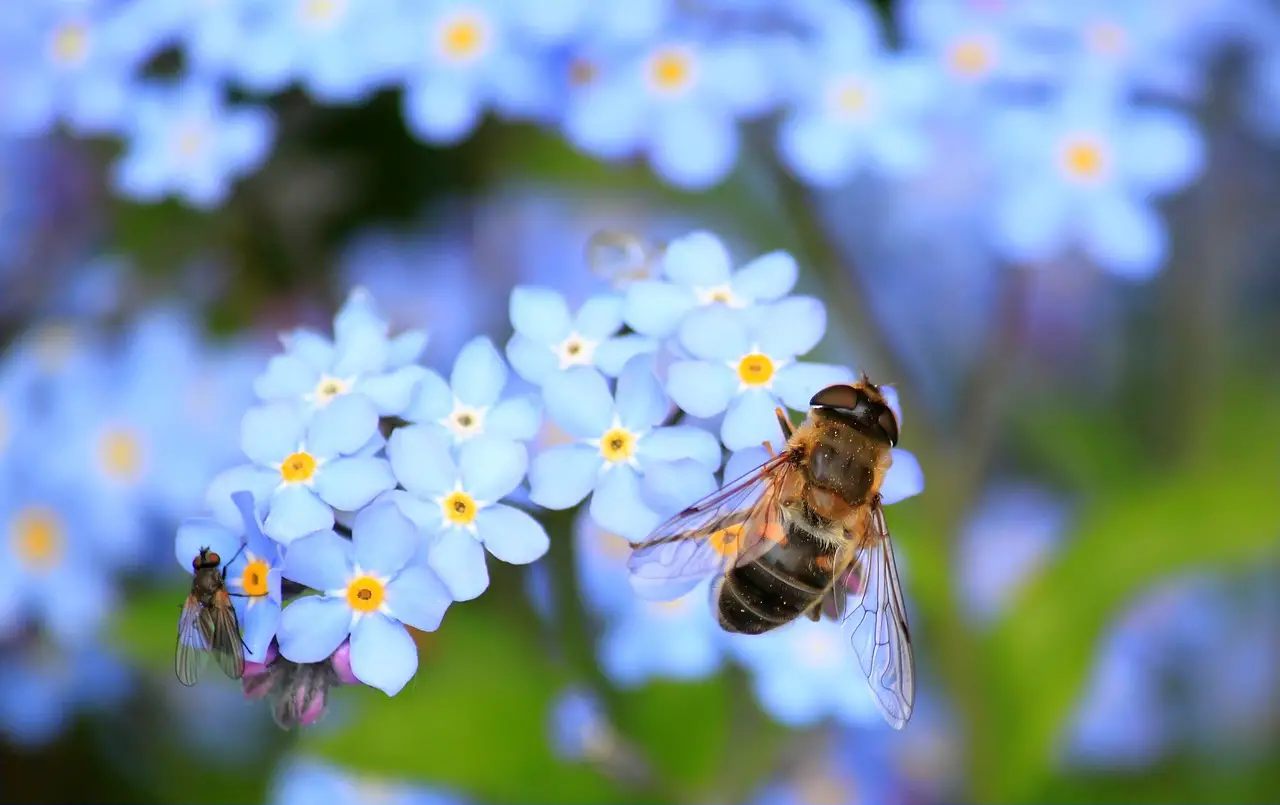Last Updated on April 9, 2024 by Real Men Sow
A garden bursting with bees is a wonderful sound. These bees are a huge blessing to gardeners. Without bees, we wouldn’t have the ability to grow many of our favorite fruits and vegetables. It’s worth incorporating a few simple but effective elements to create a fun, bee-friendly garden.

Why Bees Need Our Help
Many parts of the globe are experiencing a decline in bees and other pollinators like butterflies. Modern agricultural techniques, the expansion of cities, and the loss of natural habitats such as wildflower meadows, are some of the reasons.
The pollination of plants is a crucial service provided by bees. They also pollinate wildflowers, which feed insects that fuel the food chain. We can help wildlife by helping bees.
How Gardeners Can Help Bees?
Gardens are an area of green space that provides vital habitats for urban wildlife in cities and towns. We can support vulnerable populations by creating bee-friendly areas in our gardens while also enjoying higher harvests.
Pollinators For Bee-Friendly Gardens
The pollinators will love your garden because it has bee-friendly plants. You should plan for a succession of flowers so that each flower finishes the other. This will ensure that bees are always able to access nectar and pollen throughout the year by providing them with fresh, nutritious food.
What Flowers Should You Plant To Have A Bee Friendly Garden?
There are no hard-and-fast rules on what flowers to plant. However, you should choose flowers that are rich in pollen or nectar. This means that single flowers are preferred to double flowers. A wider variety of flowers, including shrubs and trees, in your garden will offer your bees a larger feast.
Hibernating bees can benefit from plants that bloom early in the season. Willows, hawthorn, and the blossoms of fruit trees like cherries, apples, plums, and plums are all suitable plants.
Clover, calendula, and borage are all great summer bloomers. Make sure you have late-season flowers such as echinacea, common ivy, and aster towards the end of the season.
Plant flowers strategically
The best location for bee-friendly flowers is a sunny and sheltered one. To maximize the impact of your plants on bees, you can plant them in blocks or in swathes.
Find a list of flowers that have been proven to attract beneficial insects. You can include flowers in your fruit and vegetable plot, either at the edges or at the ends of the beds. Bees will also be attracted to flowering vegetables like beans.
How To Organize Your Plants For A More Bee-Friendly Garden
Your garden should be allowed to grow a bit wilder than usual. This will help provide habitat for the bees. In winter, for example, leave the grass uncut so that it grows longer. The hollow stems of perennials can also be used to shelter them. Wild plants such as thistles and dandelions are rich in pollen and nectar. The larvae of pollinating insects can be fed on brambles and nettles.
Low-growing grasses like clover or daisies can be cut less often, which allows them to flower longer and provides more foraging opportunities for honeybees. This hands-off approach can be applied to the entire lawn or to specific areas.
Set Up A Bee Habitat In Your Garden
Wild bees can nest in many places, including tiny holes left behind by other animals. So, do your best in avoiding disturbing hibernation or nest sites.
To provide additional habitat for many species of bumble bees, you can either buy or build your own hotels. You can make your own bee hotels by collecting hollow stems, canes, and twigs in bundles. Or drill holes of different sizes into untreated wood blocks. These should measure between 2mm and 10, or 1/10 to 1/2 inch across. Place bee hotels in protected locations away from winter storms.
Avoid Chemicals In The Garden
In tune with nature, gardeners shouldn’t need to use chemical pesticides and weed killers. These unnatural controls can directly or indirectly affect beneficial wildlife.
They disrupt the food chain, deplete populations of pest predators and pollinators, and lock the gardener into dependence on additional chemicals. You should instead opt for natural pest control, such as netting, garden fleece, mesh barriers, companion plants and natural weed control like regular hoeing or mulching.

